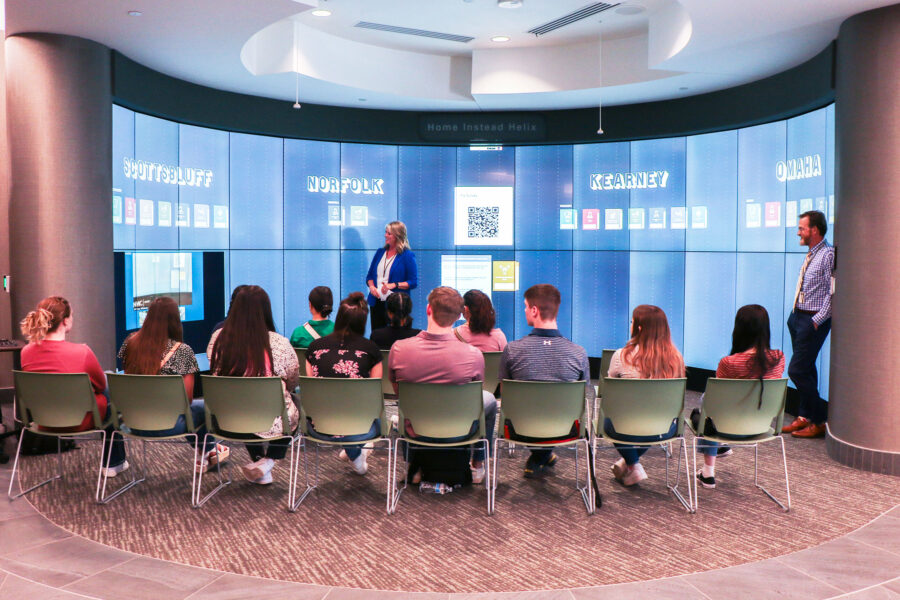Nearly 100 students in the UNMC Pathway Programs — from five different undergraduate colleges and universities — worked together across four UNMC campuses on a simulation exercise in April.
The Pathway Programs teamed with iEXCEL to coordinate a regional iWall exercise during the April quarterly connection held April 12. The Davis Global Center at UNMC’s Omaha campus was the hub for the exercise, and students also participated at iWall sites at the Health Science Education Center in Kearney, in Norfolk at the McIntosh College of Nursing and at Harms Center in Scottsbluff.
The exercise gave pathway program students the opportunity to practice using Situation-Background-Assessment-Recommendation, or SBAR, a structured communication tool used to improve patient outcomes. Students applied what they learned about the SBAR by working with their peers in interprofessional teams.
The undergraduate students are on a path to advance to UNMC in their future studies, in such subjects as medicine, nursing, dentistry and a series of allied health professions.
Kelli Schneegass, rural health program specialist with the UNMC Office of Rural Health Initiatives, said the exercise elevated the students’ health science education by giving them experience working collaboratively. Not only that, she said, the students used some of UNMC’s latest technology to enhance their experiential learning opportunities while learning a valuable communication tool to use in their future practice.
“Every opportunity that we can give our pathway students to connect with UNMC during their undergraduate years,” Schneegass said, “helps to increase their success once they matriculate to a UNMC campus and pursue their professional degree.”
The 98 participating students were from the Rural Health Opportunities Program, Kearney Health Opportunities Program, Urban Health Opportunities Program and Public Health Early Admission Student Track. They are undergraduates from Chadron State, Peru State, Wayne State, the University of Nebraska at Kearney and University of Nebraska at Omaha.
During the training, the iWall connection allowed staff and students to interact with each other in real time, Schneegass said. As they worked through the case study, students could visualize the other participants’ progress and speak with each other across the miles, which all helped deepen the discussions, she said.
Schneegass said the coordinated exercise allowed students to become familiar with the latest technology available at UNMC that connects people and resources across the state of Nebraska.
The exercise offered an awesome way, she said, to show students the opportunities available in the health care professions across Nebraska.
Michael Hollins, associate executive director, community and business strategy, for iEXCEL, said the exercise offered an excellent “sneak-peek” into the pathways students’ upcoming educational journey at UNMC. He said the experience will build excitement for the infinite possibilities to come at UNMC.
Said Hollins, “This activity not only demonstrates the incredible technologies available for UNMC learners to collaborate across distance, but also highlights our emphasis on innovative interprofessional education. These pathways students are experiencing first-hand how an interprofessional approach to health care training, coupled with advanced simulation and teaching technologies, can facilitate effective collaborative across both professions and distance.”
